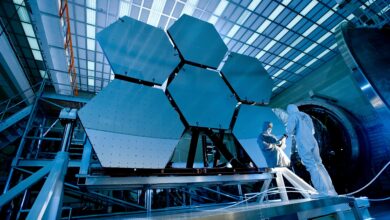Tesla Unveils Fully Self-Driving Electric Car: A Detailed Insight
Tesla Unveils Fully Self-Driving Electric Car: A Detailed Insight
In a groundbreaking event that has captured the attention of the automotive world, Tesla has unveiled its latest innovation: a fully self-driving electric car. This announcement marks a significant milestone in the evolution of transportation, showcasing Tesla’s relentless pursuit of advanced technology and sustainable energy solutions. This article delves into the details of this revolutionary vehicle, exploring its features, technology, and the broader implications for the future of transportation.
A New Era of Autonomous Driving
The Vision
Tesla’s vision for a fully self-driving electric car is rooted in the desire to enhance road safety, reduce environmental impact, and transform the way we experience mobility. The company’s CEO, Elon Musk, has long championed the idea of autonomous vehicles, predicting that they will eventually become the norm. With this latest reveal, Tesla is taking a significant step towards making that vision a reality.
Technological Marvels
The new Tesla vehicle is equipped with a suite of advanced technologies designed to enable full autonomy. Key features include:
1. Enhanced Autopilot System
The vehicle’s autopilot system has been significantly upgraded, incorporating state-of-the-art sensors, cameras, and radar. These components work together to provide a comprehensive view of the car’s surroundings, enabling it to navigate complex environments with ease.
2. Artificial Intelligence and Machine Learning
At the heart of Tesla’s self-driving technology is a powerful AI system that leverages machine learning algorithms. This system continuously learns from vast amounts of data collected from Tesla’s fleet, improving its decision-making capabilities over time. The AI can predict and react to various driving scenarios, ensuring a safe and smooth ride.
3. Full Self-Driving Hardware
Tesla’s new car is equipped with Full Self-Driving (FSD) hardware, including a custom-built supercomputer known as the Tesla Dojo. This hardware processes enormous amounts of data in real-time, allowing the vehicle to make split-second decisions with precision.
4. Over-the-Air Updates
One of Tesla’s most significant advantages is its ability to deliver over-the-air software updates. This means that the self-driving system can be continuously improved and refined without requiring a visit to a service center. Owners can expect regular updates that enhance the car’s autonomous capabilities.
Features and Capabilities
Navigation and Traffic Management
The fully self-driving Tesla can navigate through city streets, highways, and even complex intersections. It uses a combination of GPS, high-definition maps, and real-time data to plan the most efficient routes. The vehicle can handle stop-and-go traffic, make lane changes, and follow traffic signals autonomously.
Safety First
Safety is paramount in Tesla’s design philosophy. The self-driving car is equipped with multiple redundancies to ensure reliability. In the event of a system failure, the car can safely come to a stop. Additionally, Tesla’s vehicles undergo rigorous testing and validation processes to meet the highest safety standards.
Energy Efficiency
As an electric vehicle, the new Tesla car boasts impressive energy efficiency. It features a high-capacity battery pack that provides a long driving range on a single charge. The vehicle also incorporates regenerative braking technology, which recovers energy during deceleration and extends the overall range.
Interior Comfort and Convenience
Inside the car, passengers can enjoy a spacious and comfortable environment. The absence of traditional driving controls allows for a more open and flexible interior layout. Tesla has also integrated a state-of-the-art infotainment system that offers entertainment, connectivity, and productivity features to keep passengers engaged during their journey.
The Broader Impact
Environmental Benefits
Tesla’s fully self-driving electric car represents a significant step towards reducing greenhouse gas emissions and combating climate change. By transitioning to electric and autonomous vehicles, we can decrease our reliance on fossil fuels and minimize the environmental impact of transportation.
Economic and Social Implications
The advent of autonomous vehicles is expected to bring about profound changes in the economy and society. It could lead to increased productivity, as commuters can use travel time for work or leisure. Additionally, self-driving cars have the potential to improve accessibility for individuals who are unable to drive, such as the elderly or disabled.
Challenges and Considerations
While the prospects of fully self-driving cars are exciting, there are several challenges to address. These include regulatory hurdles, ethical considerations, and the need for robust cybersecurity measures. Tesla and other stakeholders must work together to navigate these challenges and ensure the safe and responsible deployment of autonomous vehicles.


